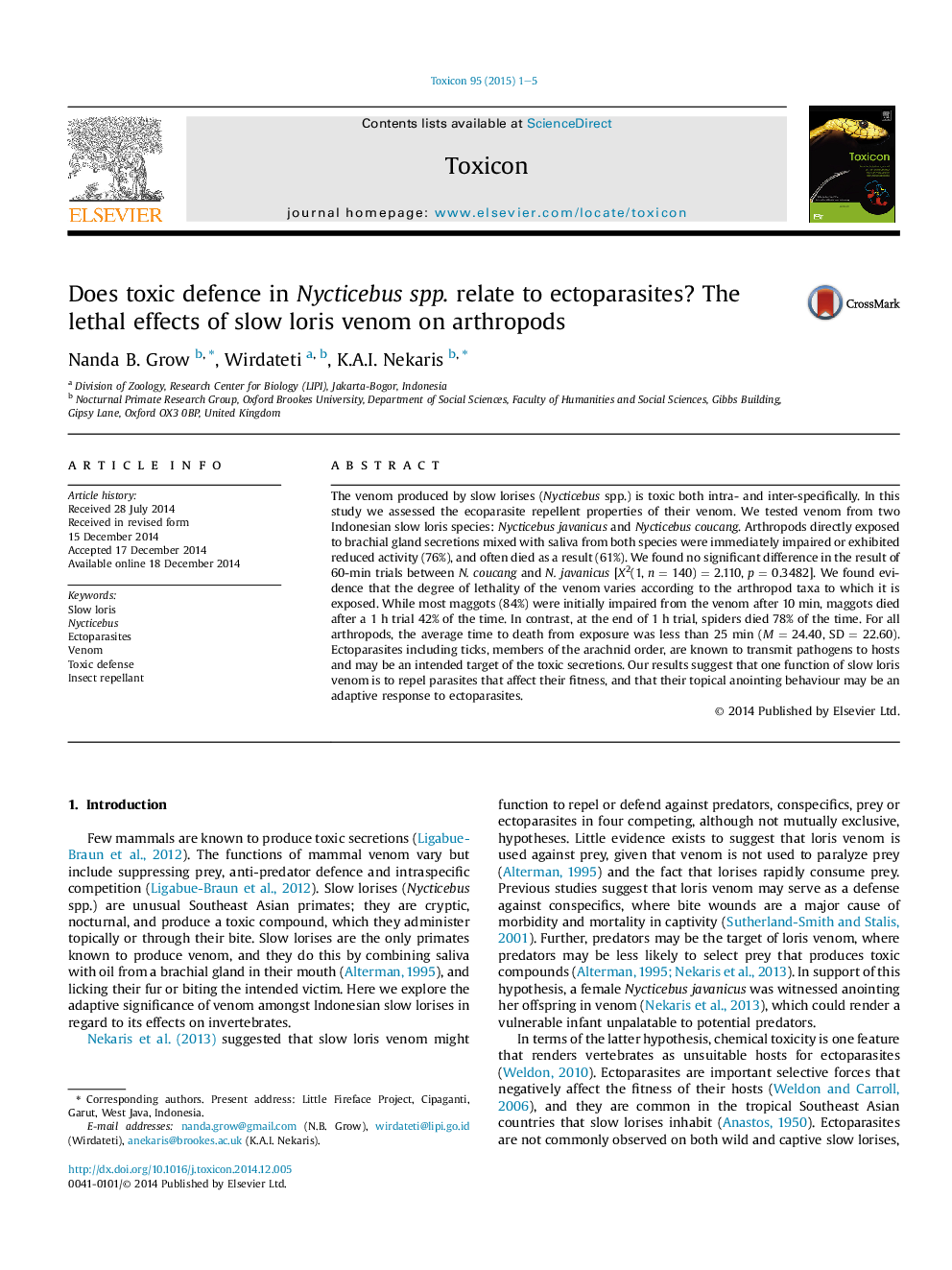| کد مقاله | کد نشریه | سال انتشار | مقاله انگلیسی | نسخه تمام متن |
|---|---|---|---|---|
| 8395619 | 1544140 | 2015 | 5 صفحه PDF | دانلود رایگان |
عنوان انگلیسی مقاله ISI
Does toxic defence in Nycticebus spp. relate to ectoparasites? The lethal effects of slow loris venom on arthropods
دانلود مقاله + سفارش ترجمه
دانلود مقاله ISI انگلیسی
رایگان برای ایرانیان
کلمات کلیدی
موضوعات مرتبط
علوم زیستی و بیوفناوری
بیوشیمی، ژنتیک و زیست شناسی مولکولی
بیوشیمی، ژنتیک و زیست شناسی مولکولی (عمومی)
پیش نمایش صفحه اول مقاله

چکیده انگلیسی
The venom produced by slow lorises (Nycticebus spp.) is toxic both intra- and inter-specifically. In this study we assessed the ecoparasite repellent properties of their venom. We tested venom from two Indonesian slow loris species: Nycticebus javanicus and Nycticebus coucang. Arthropods directly exposed to brachial gland secretions mixed with saliva from both species were immediately impaired or exhibited reduced activity (76%), and often died as a result (61%). We found no significant difference in the result of 60-min trials between N. coucang and N. javanicus [X2(1, n = 140) = 2.110, p = 0.3482]. We found evidence that the degree of lethality of the venom varies according to the arthropod taxa to which it is exposed. While most maggots (84%) were initially impaired from the venom after 10 min, maggots died after a 1 h trial 42% of the time. In contrast, at the end of 1 h trial, spiders died 78% of the time. For all arthropods, the average time to death from exposure was less than 25 min (M = 24.40, SD = 22.60). Ectoparasites including ticks, members of the arachnid order, are known to transmit pathogens to hosts and may be an intended target of the toxic secretions. Our results suggest that one function of slow loris venom is to repel parasites that affect their fitness, and that their topical anointing behaviour may be an adaptive response to ectoparasites.
ناشر
Database: Elsevier - ScienceDirect (ساینس دایرکت)
Journal: Toxicon - Volume 95, 1 March 2015, Pages 1-5
Journal: Toxicon - Volume 95, 1 March 2015, Pages 1-5
نویسندگان
Nanda B. Grow, Wirdateti Wirdateti, K.A.I. Nekaris,